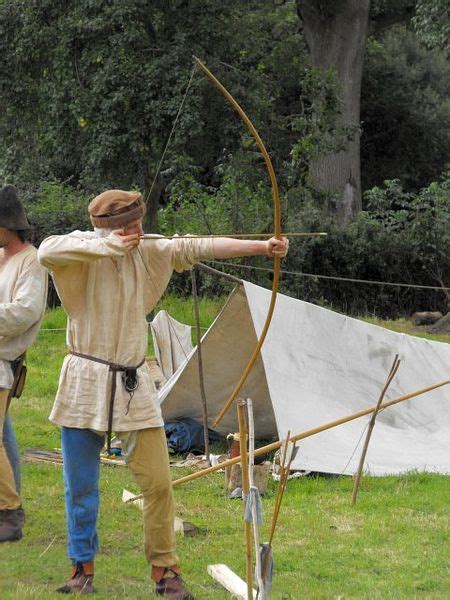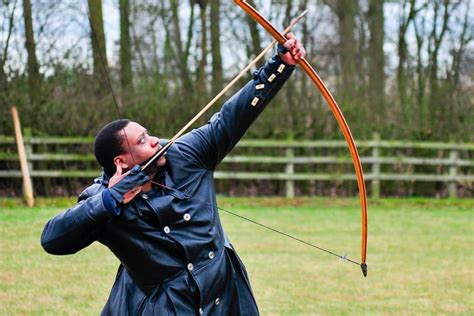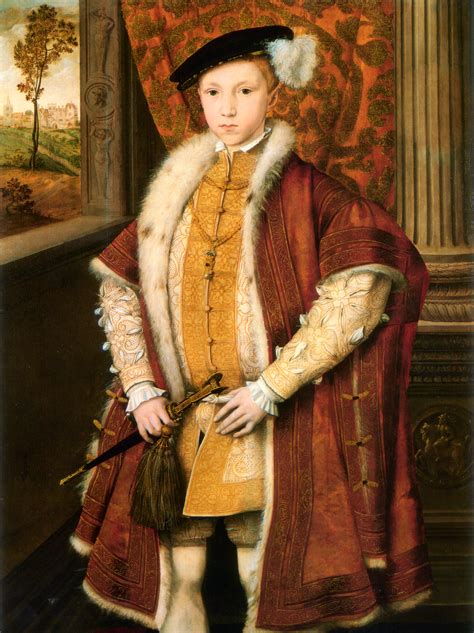tudor archery facts | modern longbow archers tudor archery facts Much of what we know about their history is gleaned from the haul found on the Tudor warship Mary Rose, which sank suddenly off the South Coast of England in July 1545. It was raised . Browse Rolex 1908 Watches online at Ben Bridge Jeweler. Official Authorized Rolex retailer of Men and Ladies Rolex Watches. Discover more at Ben Bridge.
0 · tudor england archery
1 · modern longbow archers
2 · edward vi tudor england
3 · edward vi archery
The Rolex Submariner was first introduced in 1953 as part of a trio of new black-dialed, stainless-steel sport watches released by the Crown. Its siblings were the .
The English longbow was a powerful medieval type of bow, about 6 ft (1.8 m) long. While it is debated whether it originated in England or in Wales from the Welsh bow, by the 14th century the longbow was being used by both the English and the Welsh as a weapon of war and for hunting. English longbows were effective against the French during the Hundred Years' War, particularly in the . Tudor archery was a popular pastime in England and Wales during the Tudor period (1485–1603). Archery was a national sport and an important piece of national defence. . In 1545 Roger Ascham, humanist scholar and educationalist, published Toxophilus, a dialogue in which an enthusiast for the longbow expounds to a sceptic the many .Much of what we know about their history is gleaned from the haul found on the Tudor warship Mary Rose, which sank suddenly off the South Coast of England in July 1545. It was raised .
The field quickly turned into a quagmire, churned up by the feet of thousands of heavily-armoured men and horses. The English and Welsh archers, some ten ranks deep, rained tens of .
Archaeologists recovered over 3,500 arrows and 137 intact longbows among the wreckage, offering a glimpse into the weapon’s legacy. Through the annals of history, the .The Mary Rose. Flagship of Henry VIII. Thousands of artifacts from the era of Tudor England were discovered and of particular interest to our study, over 170 English Longbows as well as .In 1545 Roger Ascham, humanist scholar and educationalist, published Toxophilus, a dialogue in which an enthusiast for the longbow expounds to a sceptic the many benefits of archery for .
The English longbow was one of the most famous weapons of the medieval period. Though it required extensive training, the longbow could prove devastating on the battlefield .
By the end of the Tudor era, with gunpowder weapons spreading across the world, the longbow would start to leave the armouries of England. . The first-known target archery competition took places in Finsbury, England in 1583 and had 3000 participants. Longbow shooting was a fashionable pursuit in the late 18th century, seen even then as a .Join us for this unique and unforgettable experience exploring archery in the 16th century. Discover the world of Tudor archery, explore the museum with a behind the scenes guided tour of our collection, uncover amazing facts about the archers aboard the Mary Rose and their weaponry and lethal skills.Learn how a Tudor arrow was made, and handle real and replica . Leisure activities in the Elizabethan era (1558-1603 CE) became more varied than in any previous period of English history and more professional with what might be called the first genuine entertainment industry providing the public with regular events such as theatre performances and animal baiting. Outdoor activities included tennis, bowls, archery, fencing, . Tudor England also explored and expanded overseas, with figures like Sir Walter Raleigh and Sir Francis Drake. The Tudors’ legacy includes the Church of England, literary excellence, and global influence, making their reign a pivotal chapter in English history. Tudors Facts 1. The Tudor dynasty began with Henry VII in 1485
Join us for this unique and unforgettable experience exploring archery in the 16th century. Discover the world of Tudor archery, explore the museum with a behind the scenes guided tour of our collection, uncover amazing facts about the archers aboard the Mary Rose and their weaponry and lethal skills. Learn how a Tudor arrow was made, and handle real and replica . In 1585, Members of Parliament banned bear-baiting but Elizabeth overruled them. Other ‘sports’ of Tudor England included blinded bears being whipped by a group of men and donkeys being attacked by a pack of dogs. Elizabeth is said to have enjoyed both of these ‘sports’. A German visitor to Tudor England wrote the following:Chelmsford Tudor Rose Archers (CTRA) is an archery club based in the city of Chelmsford consisting of members who share a keen interest in the sport of archery. Our members are varied in age, and ability, and range from competition regulars to those who are happy to enjoy a spot of shooting and socialising.The museum's archery experts, dressed in full period costume, will demonstrate the use of replica historical bows and arrows. You'll witness the impressive display of their skills and learn fascinating facts about Tudor archery. Plus, there's a chance for kids to give archery a go, too.
Archery was another activity that was performed by both the rich and the poor. In the Tudor period it was law for every man to practice archery on Sundays after church. . - Alison Sim, Pleasures and Pastimes in Tudor England (The History Press, 2011) - Ruth Goodman, How to Be a Tudor: A Dawn-to-Dusk Guide To Tudor Life (Penguin Books Ltd .
tudor england archery
modern longbow archers


Tudor Archery: Mastering the Longbow. Archery played a vital role in Tudor warfare, and the longbow was the weapon of choice for many soldiers. Longbowmen were highly skilled and trained extensively to master their craft. The longbow was a tall and powerful bow made of yew wood that could shoot arrows over an impressive distance. Its range and .
History: Archery Archery is among the oldest and most popular sports still currently practiced. While archery is said to have originated approximately 20,000 BC in the Stone Age, the Ancient Egyptians were among the first to utilize bows and arrows for foraging and combat around 3,000 BC. . Archery was also supported by Tudor rulers such .
Here are three famous medieval archery contests that left a lasting mark on history: The Finsbury Fields Archery Contest. The Finsbury Fields Archery Contest, held in London, England, in 1583, was one of the most renowned archery competitions of its time. The contest took place annually and drew participants from all over England.
Tudor Archery in Decline. Archery was a popular pastime and essential life skill in Tudor England, with a rich history dating back to medieval times. However, by the later sixteenth century, archery began to decline as a form of mandatory military training. This shift can be attributed to various factors, including changes in weaponry, the .
Above: A game of Tudor football. The well laid-out pitch and seemingly wealthy spectators suggests that this was an upper-class match. . concerned that it was diverting the villagers from the much more useful pastime of archery. By 1540 this concern had become so great that the government passed a law banning the game of football all together . Archery was Tudor England’s national sport as well as an important piece of their national defense. The English and Welsh had used the longbow, a tall bow about 6 ft (1.8 m) long, for both hunting and as a weapon since medieval times.The English longbow was a powerful medieval type of bow, about 6 ft (1.8 m) long. While it is debated whether it originated in England or in Wales from the Welsh bow, by the 14th century the longbow was being used by both the English and the Welsh as a weapon of war and for hunting. Tudor archery was a popular pastime in England and Wales during the Tudor period (1485–1603). Archery was a national sport and an important piece of national defence. The longbow, a tall bow about 6 ft (1.8 m) long, was used for hunting and as a weapon.
In 1545 Roger Ascham, humanist scholar and educationalist, published Toxophilus, a dialogue in which an enthusiast for the longbow expounds to a sceptic the many benefits of archery for personal development and national defence. Ascham was worried that archery practice was in catastrophic decline. Much of what we know about their history is gleaned from the haul found on the Tudor warship Mary Rose, which sank suddenly off the South Coast of England in July 1545. It was raised from the seabed in the 1980s in an amazing feat of maritime archaeology.
The field quickly turned into a quagmire, churned up by the feet of thousands of heavily-armoured men and horses. The English and Welsh archers, some ten ranks deep, rained tens of thousands of arrows down onto the mud trapped French and what followed was a bloodbath. Archaeologists recovered over 3,500 arrows and 137 intact longbows among the wreckage, offering a glimpse into the weapon’s legacy. Through the annals of history, the English longbow emerges as a symbol of power, strategic mastery, and the profound impact it left on medieval warfare.The Mary Rose. Flagship of Henry VIII. Thousands of artifacts from the era of Tudor England were discovered and of particular interest to our study, over 170 English Longbows as well as almost 4000 arrows and other archery-related artifacts.
In 1545 Roger Ascham, humanist scholar and educationalist, published Toxophilus, a dialogue in which an enthusiast for the longbow expounds to a sceptic the many benefits of archery for personal development and national defence. Ascham was worried that archery practice was in catastrophic decline.

edward vi tudor england
edward vi archery
1926 Le Soleil Hotel & Spa. 1,096 reviews. #6 of 29 hotels in Sliema. Thornton Street, Sliema, Island of Malta SLM 3143 Malta. Write a review. Check availability. View all photos ( 712) Traveller (642) Room & Suite (114) Dining (40) View prices for your travel dates. Check In. Fri, 31 May. Check Out. Sat, 01 Jun. Guests.A Coco Chanel Little Black Dress, released in 1926. Museum at the Fashion Institute of Technology, gift of Mrs. Georges Gudefin. The year was 1926: The month was October. .
tudor archery facts|modern longbow archers



























